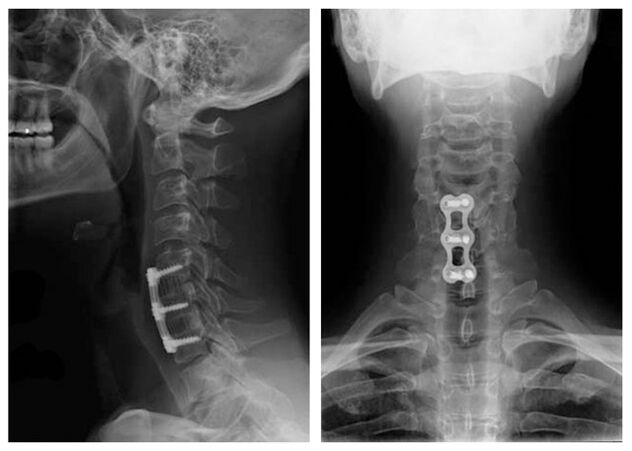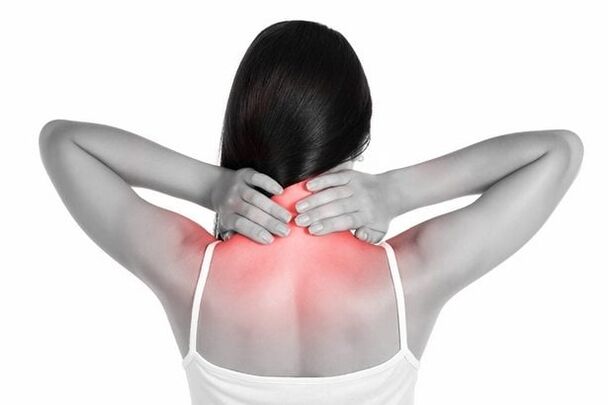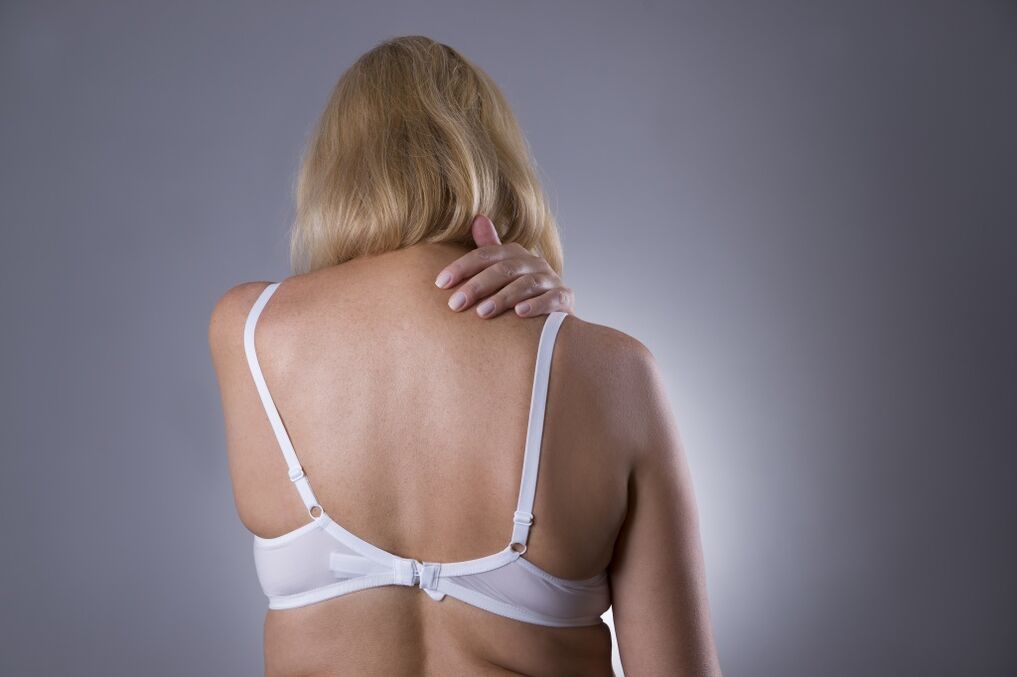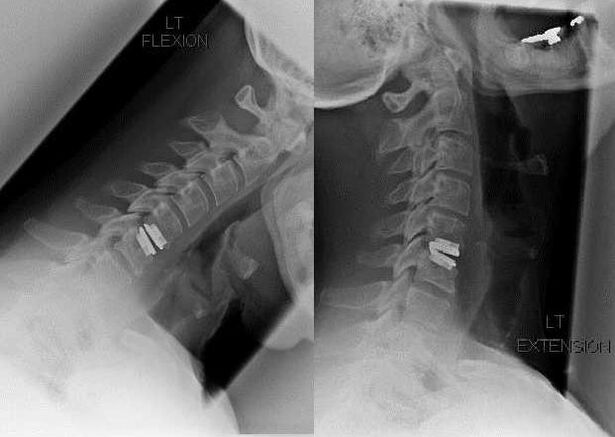The cervical region of the spine is subjected to increased loads, which the cervical muscles are trying to lead to balance during the influence of the above resources. This provokes the appearance of muscle spasm, due to which there is a violation of blood transport throughout the body. As a result, the formation of anatomical damage is marked.

Osteochondrosis, a disease of the century and this is one reason, and the rest is more likely a consequence that leads to the development of a disease. Manifestations of the disease are varied, and in the first visit to a neuropathologist, it is not always possible to make an accurate diagnosis. In any case, after feeling maltreatment and the first symptoms, we visit the doctor's radical. Diagnosis and start treatment based on the results of the examination. In the early stage, to cure, perhaps, any pathology. Osteochondrosis of the cervical region is a chronic, slowly progressive spinal disease, in which the intervertebral joints and discs are affected and destroyed. The vertebrae from the first to the seventh, which belong to the cervical region, suffer. As the disease progresses, the intervertebral discs lose their elasticity and strength, flattened, relax, their depreciation properties worsen. Such deformity occurs due to changes caused by energy disorders and tissue impoverishment. These violations are one of the natural processes of body aging, but various overloads, behavioral disorders, damage, congenital spine abnormalities and some other causes provoke early cartilage wear and discs. More and more young people choose a sedentary job. The lack of properly organized regular loads leads to a weakening of the muscles that regulate the spinal column, a decrease in metabolism and blood circulation in the intervertebral spaces. As a result, as a result of a physical activity over time, a spinal nerve cracks may occur or forms an intervertebral hernia. Spinal deformity (lordosis, kyphosis, scoliosis) is one of the causes of osteochondrosis
Some of the above causes cause osteochondrosis and other spine. Cervical osteochondrosis develops with excessive load on this part of the spine. The neck muscles are trying to reduce it, which leads to spasm, circulatory disorders and as a result, degenerative processes in the back. This disease is dangerous because the vertebral artery passes near the area of the lesion, which feeds the brain. With the displacement of the discs, the growth of fibrous tissue occurs, the functioning of the blood vessels occurs. For the successful treatment of osteochondrosis of the cervical region, it is first necessary to determine the cause of the occurrence, the preconditions that provoked its development and eliminates them. Until recently, the disease was found only in people aged 45. Now young people are 18-25 years old. The main causes and prerequisites for the emergence of osteochondrosis of the cervical vertebra are:

The main cause of the occurrence of the disease is a sedentary lifestyle, due to which nutrients appear to "stuck" and do not reach the spinal cord. However, there are others:
The main causes of cervical osteochondrosis are a sedentary lifestyle. Pathologies are more susceptible to drivers, office employees, lovers to sit next to monitor screens. Due to the constant seated image and with a lack of physical exercise, they can:
Violations of the vertebrae are provoked due to the lack of nutrients of the interaction (permanent disk as well, the potential causes of osteochondrosis of the cervical region are an unbalanced, incorrect food. The most common factors for cervical spinal osteochondrosis:
Many of the above factors form the load on the neck vertebrae, which is why muscle spasms appear. As a result, circulatory disorders manifest, metabolic processes decrease and this leads to degenerative deviations. Sometimes, with cervical osteochondrosis, the cause of formation can be a developing disc, which is transmitted to bone tissue and narrow vertebrae. Often appears with a prolonged physical exercise.
Methods of preventing the disease
Osteochondrosis is a repeated degenerative-district pathology that continues against the backdrop of gradual destruction of intervertebral discs and bone deformity. It is necessary to exclude from the usual way of life Factors that provoke the deterioration of the trophies of cartilage fabrics. This is low motor activity, excess weight, excessive physical activity, deficiency in the diet of products with a high content of trace elements, vitamins.
Progress, osteochondrosis of the cervical vertebrae passes several stages that are classified by various symptoms. Distinguish 4 stages of pathology development:

Signs of neck disease are significantly different from the symptoms of osteochondrosis in another area of the vertebral column. Since the cervical vertebrae are located nearby, the nerve roots and the spinal cord are glued. This leads to the appearance of such signs:
Symptoms for cervical osteochondrosis in women are no different from signs in men. Women who have reached the age of 45 and older, who are diagnosed with such a disease, mark numbness and tingling in the upper limbs in a dream.
Methods for the treatment of cervical osteochondrosis
The main signs of osteochondrosis of the cervical region include:
Other signs of cervical osteochondrosis include ear noise, hearing damage, and a decrease in visual acuity. Sometimes the disease makes itself feel by attracting pain in the heart area. At the first signs of cervical osteochondrosis, consult a doctor who will perform a comprehensive examination will make a diagnosis. In this case, such diagnostic methods as MRI, laboratory studies, ultrasound, ECG may be used. As well as shants - are elastic with plastic or metal inserts, gestures, inflatable. Equipment vary in height, fixing scale and design of fasteners. It all depends on the neglect, the characteristic symptoms of the PINCH of the radical nerve, as well as other factors. How to cure cervical osteochondrosis or reduce its manifestation with medication:

Cervical osteochondrosis is treated by conservative methods, and treatment is always comprehensive. Medication therapy is the same for osteochondrosis of each department: use medicines from certain pharmacological groups, but the choice of specific medicines from these groups, dosage, duration of intake is individually selected for each patient. The X -Ray of the cervical backpack after surgical treatment of the C5 - C7 beads is complemented by a temporary dress of a chanstz collar or its varieties. Due to the fixation of the cervical vertebrae, osteochondrosis of the cervical region is treated faster. This additional orthopedic device helps to cope with the pain, normalizes blood flow through the neck vessels and improves the patient's overall condition.
The severity of the symptoms of the cervical osteochondrosis disease depends on the degree of destruction of the structures of the vertebrae. Symptoms exacerbate the growth of bone tissue with the formation of osteophytes, radicular syndrome (root pain when the nerve is attached), intervertebral hernia (disk extension in the spinal canal). The first signs of the disease are periodic headache in the nape, neck pain, cramps and clicks on the beads when turning your head, sometimes a slight shoulder. Over time, the symptoms increase and the intensity of the pain intensify. It is difficult to raise the hand from the side of loss - there is immediately a stroke on the shoulder or neck. Limiting head movements due to pain often occurs in the morning after sleep in an unpleasant position. The disease leads to squeezing the roots of the peripheral nerves (Roying syndrome) and causes pain along these nerves. It is possible to numb the hands or fingers, a violation of the sensitivity of certain areas of the inner skin from a suppressed nerve.


















